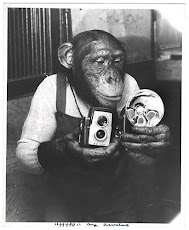 With the recent release of "The Lost Photographs of Captain Scott" (Robert Falcon Scott's Lost Photographs -- click here to see the New York Times articles and slideshow), I thought it would be fitting to also mention the work of Herbert Ponting.
With the recent release of "The Lost Photographs of Captain Scott" (Robert Falcon Scott's Lost Photographs -- click here to see the New York Times articles and slideshow), I thought it would be fitting to also mention the work of Herbert Ponting.Herbert Ponting started out as the photographer and cinematographer for Robert Falcon Scott's Terra Nova Expedition to the South Pole (1910-1913). Once the sledging began, a strenuous trek to move supplies across the Ross Ice Shelf, Ponting returned to civilization in 1912. He had amassed more than 1700 photographs and he was spared the ill fate of the expedition. Robert Falcon Scott continued as photographer in place of Ponting but he perished on the Ross Ice Shelf in November of 1912. Along with Scott's photographs, his diaries and journals were found and I think they may be even more moving than the photographs -- how could they not be? They describe the last days of life and pleas to their countrymen to look after the expedition's widows and survivors.
In this post, however, I am featuring the work of Herbert Ponting.
It is worth noting that Ponting was the first man to use a portable movie camera, a "cinematograph" in Antarctica. He also took some of the first known color still photographs and used a flash for several of the photographs.
Also related, is a post I did on Frank Hurley (click here), the photographer of Douglas Mawson's Antarctic Expedition (1911-1914) and Ernest Shackleton's Trans-Antarctic Expedition (1914-1917).









 Self Portrait
Self Portrait
It is worth noting that Ponting was the first man to use a portable movie camera, a "cinematograph" in Antarctica. He also took some of the first known color still photographs and used a flash for several of the photographs.
Also related, is a post I did on Frank Hurley (click here), the photographer of Douglas Mawson's Antarctic Expedition (1911-1914) and Ernest Shackleton's Trans-Antarctic Expedition (1914-1917).









 Self Portrait
Self Portrait


































































